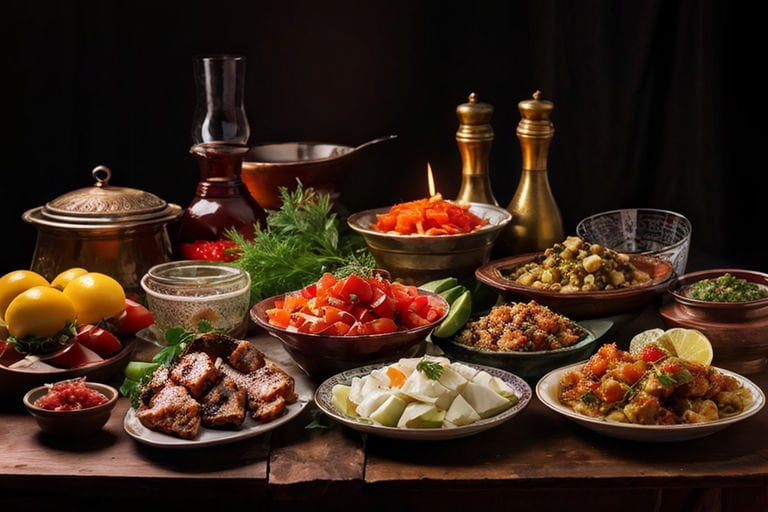Turkish cuisine is renowned worldwide for its rich and diverse array of dishes. A significant aspect of this cuisine is the meze culture, which holds a special place both at the table and in social life. Meze refers to small dishes or appetizers that are typically served before the main course. In this article, we will explore the origins, variety, and role of meze in Turkish dining.
Origins of Meze Culture
The word “meze” is derived from the Arabic word “mazza,” meaning to taste or relish. The culture of meze dates back to the Ottoman Empire and has evolved over time, incorporating regional variations. Meze held an important place in both the royal Ottoman cuisine and the everyday meals of the people. This culture has been enriched by the culinary traditions of various nations within the Ottoman geography.
Types of Meze
Turkish cuisine boasts a wide variety of meze, each offering different flavors. Here are some of the most popular mezze:
- Hummus: Made from chickpeas, tahini, lemon juice, olive oil, and garlic, this meze has its origins in Middle Eastern cuisine.
- Haydari: A yogurt-based meze made with white cheese, garlic, and various herbs.
- Acılı Ezme: A spicy salad made with tomatoes, peppers, onions, parsley, and various spices.
- Eggplant Salad: A light and flavorful meze made with roasted eggplant, olive oil, garlic, and lemon juice.
- Dolma and Sarma: Stuffed grape leaves or vegetables filled with rice and various spices, these are staples of Turkish tables.
- Cheese and Olive Plate: A selection of cheeses and olives, often served with olive oil and oregano.
Meze Culture at the Table
Meze is not just an appetizer in Turkish dining; it is also a companion to long conversations and enjoyable moments. Particularly at a rakı table, meze is indispensable. Rakı, a traditional Turkish alcoholic beverage, is sipped slowly with meze while engaging in leisurely conversation, enhancing the flavors of the meze.
Regional Variations
The types and presentations of meze vary across Turkey’s different regions. In the Aegean Region, olive oil-based and herb meze are prominent, while in the Southeastern Anatolia Region, spicy and seasoned meze are preferred. In the Black Sea Region, meze made with anchovies and cornmeal are popular. This diversity reflects the richness of Turkish cuisine and its ability to bring together different flavors.
Conclusion
The culture of meze in Turkey is a tradition that has evolved and enriched over centuries. Meze is not only food but also a means of strengthening social bonds and enlivening tables. This culture is maintained with various flavors and presentations across Turkey’s regions and is passed down from generation to generation. As an essential part of Turkish cuisine, meze continues to hold a special place at the table with its flavor and variety.









